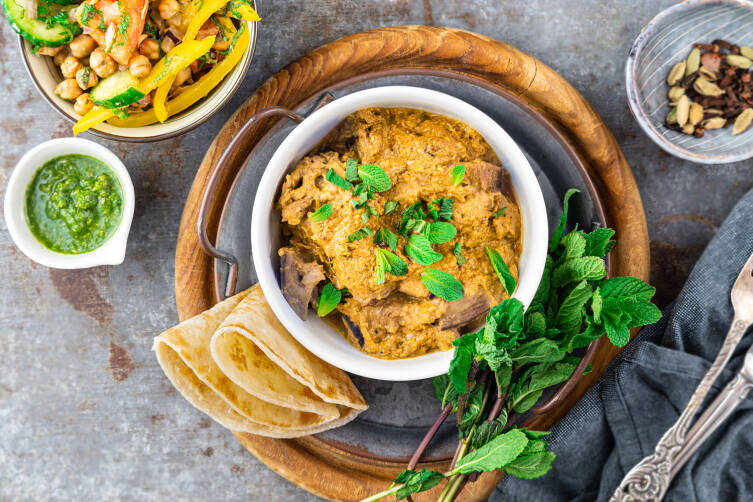“Weekday meals will continue to evolve towards maximum consumer convenience”
Organic growth
The coronavirus pandemic and the ensuing restaurant lockdown led to an influx of new customers for MarleenKookt. At the same time, however, people had more time to make food at home, which meant the order frequency went down temporarily. Jansen: “All in all we saw some growth, but at around the same rate that we’re used to. There was no sudden extreme spike.” What are their expectations for the future? “Delivery for our kind of meals at home is growing, and will continue to grow. We’re constantly on the lookout for new markets we might be able to serve, but we’re taking it slow like we’ve always done. We strive for steady, organic growth. The most important thing for us is to continue delivering a high quality service that offers good value for money. Day in day out. That’s a challenge in and of itself. If you start cutting corners for the sake of growth, you’ll be out of business quicker than you started.”
No subscriptions
If you order before 11 in the morning, you’ll get a meal the same day. You can order for this week or the next, for a specific day, multiple days, or the full week. Whichever is most convenient for you. They deliberately eschew the subscription model in favor of maximizing freedom of choice for customers. Jansen: “The average customer orders once or twice a week. As long as customers are happy, they’re the most likely to come back and order again.” The meals are served in reusable porcelain bowls, in sharp contrast to the bland disposables most other delivery services use. Jansen: “It’s less wasteful and looks better. It’s easy too. You can put our bowls in an oven or microwave them without issue.” If a customer places another order, the bowls from the previous order are picked up at the next delivery. If the customer chooses not to order again, the bowls will be collected regardless. Perhaps not the most efficient solution, logistically speaking, but emblematic of the quality MarleenKookt wishes to offer.


The menu
The quality and variety of the food is critical for the success of the business. Jansen: “We use a lot of different ingredients. We make our own broths and things like ketchup. We try to maximize flavor.” Every week they develop two new recipes on average. The cuisine is varied and modern, with dishes from all over the world: Malaysian chicken curry, stuffed portobello mushrooms with a lentil salad, a meatless bourguignon, as well as timeless dishes like lasagna bolognese and various classic Dutch stews. Customers have multiple options, with each day offering a main course with meat or fish, a vegetarian/vegan option or a classic dish. There’s also an option for a starter or dessert, and a different kids’ meal each day. The latter is the most difficult category to prepare, says Marleen. She tries to ‘hide’ as many vegetables in the children’s meal as possible.
Cargo bike with a cooler
The operation started small, delivering around ten meals a day to friends and acquaintances whose children went to the same school. Delivery was done on the same bicycle that carried the kids to school, with service only in the Amsterdam area. To cook, they had the use of a cooking studio during daytime. After three months they were ready to invest in an electric cargo bike, repurposed and fit with a cooler to move meals instead of kids.
Nowadays, the team consists of twenty employees and MarleenKookt has its own transport network of 36 cargo bikes in three cities.
The growth was almost entirely organic. Jansen: “We started the company from scratch, with a lot of bumps along the way. Scaling up, we kept encountering things we simply hadn’t had to consider before. Take something like planning out your delivery routes. If you have ten meals you can do that on the back of a beer coaster. But when you have a hundred, all needing to be delivered within half hour windows ranging between 4 and 8PM, you’re going to need software and planners.”

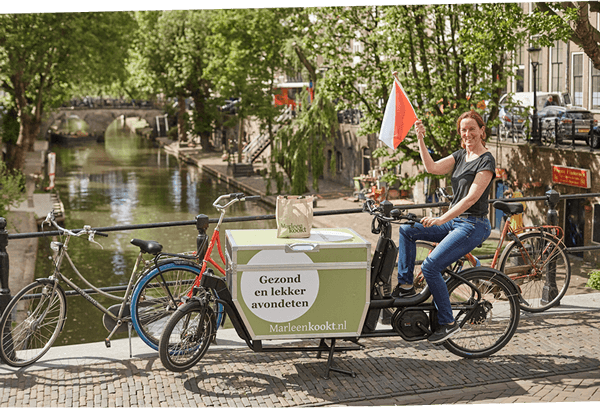
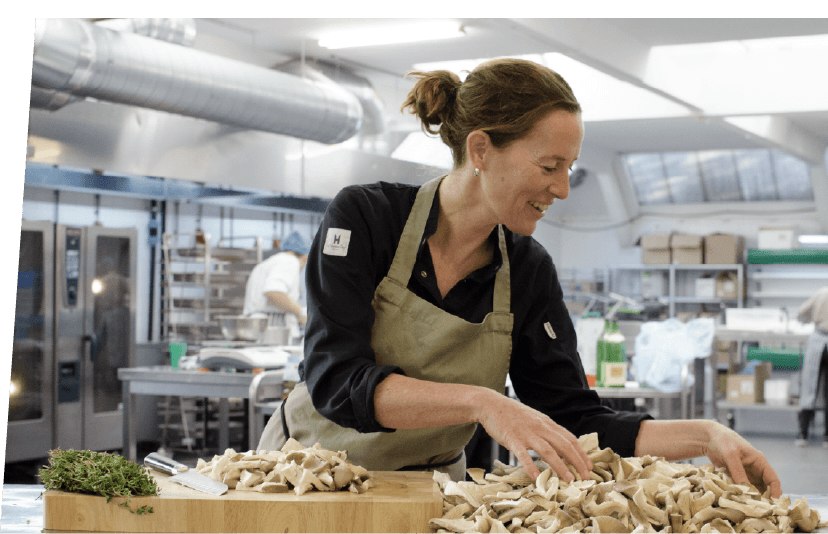

Pioneering to fill a personal need
MarleenKookt, which cooks and delivers freshly made meals, is one of the pioneers of this evolving trend in The Netherlands. Nine years ago, the founders quit their day jobs, and after a six month sabbatical they decided to start a meal delivery service. HelloFresh had yet to enter the Dutch market and the now familiar delivery platforms like Just Eat Takeaway, Deliveroo, or Uber Eats either didn’t exist or were only just beginning to catch on. Daily delivery of full meals at home was mostly limited to care facilities and senior centers. It was during this aforementioned sabbatical in Mallorca, where the family’s children aged five and seven were being homeschooled, that the contours of MarleenKookt began to become clear. Fresh, high quality meals aimed at young families that didn’t have the time or the inclination to spend hours on a meal every weekday. Jansen: “On Mallorca I began cooking every day again. It was something I always enjoyed but could never find the time for. Working with local ingredients every day. Coming up with new recipes. I loved it.” Her husband, who used to be part of the C-Suite at online photo service company Albelli and already had a wealth of experience in business development, took care of the business side of things from day one, managing the technology, delivery, and marketing. In late 2011, MarleenKookt was ready to get started.


Growing demand for meals at home
For many, it’s a real challenge to come up with and prepare a somewhat varied, healthy, and flavorful meal day in day out, seven days a week. Especially in a modern household of multiple people, where you have to account for the preferences and intolerances of each household member, including infamously picky eaters or demanding toddlers. Realising a home cooked meal requires a serious investment of time and effort. Most home chefs have an ironclad repertoire of maybe five reliable dishes total, and little inclination or energy to expand. This is a key driver behind the explosive growth of businesses offering meals at home that we’ve seen over the past few years, mostly aimed at customers looking for a bit of convenience. Just think about how much the ready made meal aisle at your local supermarket has expanded (sometimes to include online ordering and delivery), the ever increasing number of meal kit providers and the growing popularity of food delivery platforms.
This rapid growth isn’t showing any signs of stopping any time soon. Jansen: “The current generation of young families are still used to cooking at home somewhat regularly during the week. I think the generation of young parents after this one won’t be. It’s like when we used to make our own bread and butcher our own pigs. Nobody does that anymore either.” The weekends are for home cooking, extravagantly so if possible, Jansen expects. Weekday meals, however, will continue to evolve towards maximum convenience.
Marcus Polman Sander van der Meij
Ten years ago, the Dutch MarleenKookt, founded by Marleen Jansen, was one of the very first to begin delivering freshly made meals to people’s homes daily. It has since grown to employ five chefs and delivers a thousand meals a day on average. How did they realise this growth? And which factors have been critical for the success of this emerging meal delivery concept?
6 min
The growth strategy of emerging meal delivery company MarleenKookt

COOL CONCEPT
THE GROWTH STRATEGY OF EMERGING MEAL DELIVERY COMPANY MARLEENKOOKT

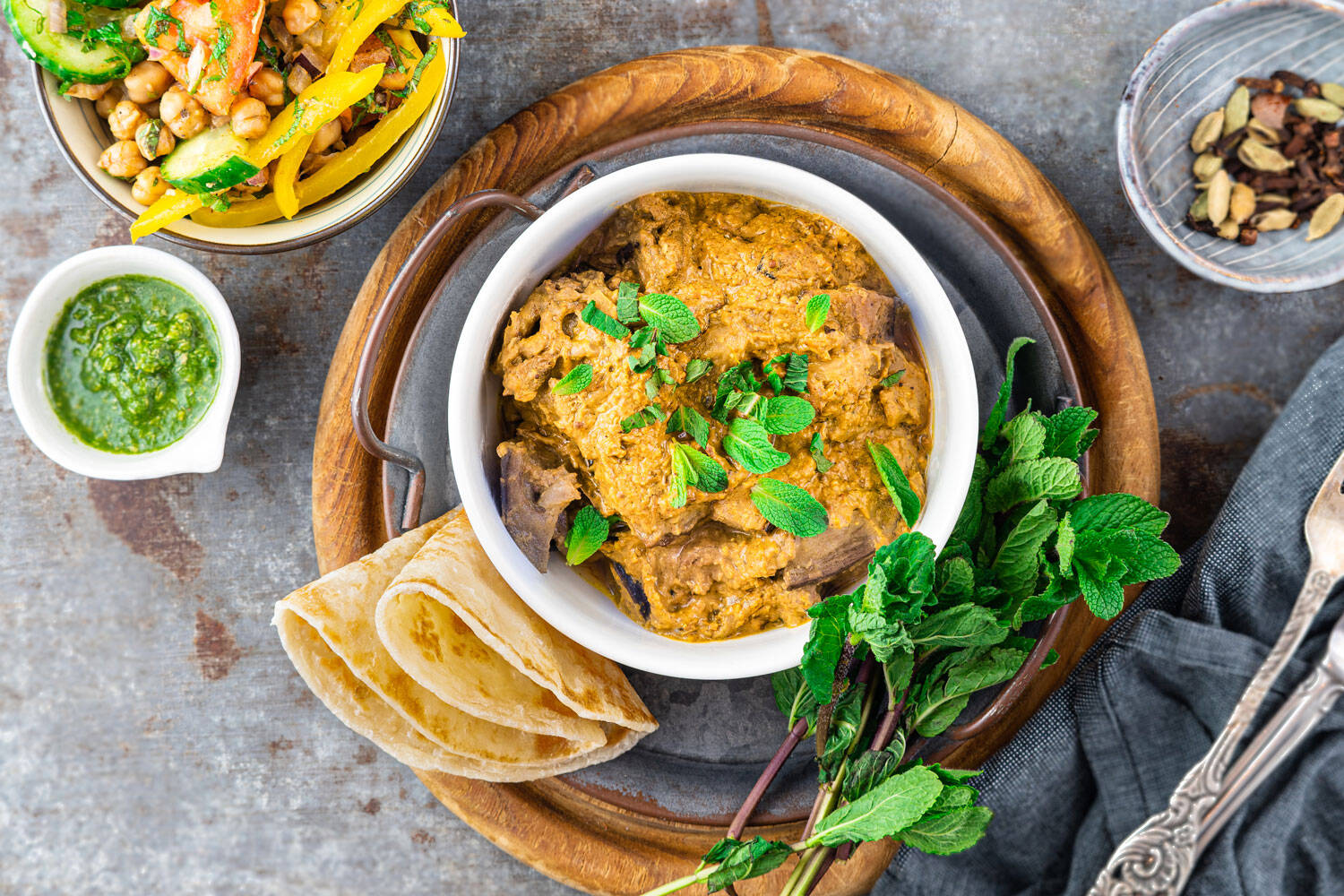
“Weekday meals will continue to evolve towards maximum consumer convenience”
Organic growth
The coronavirus pandemic and the ensuing restaurant lockdown led to an influx of new customers for MarleenKookt. At the same time, however, people had more time to make food at home, which meant the order frequency went down temporarily. Jansen: “All in all we saw some growth, but at around the same rate that we’re used to. There was no sudden extreme spike.” What are their expectations for the future? “Delivery for our kind of meals at home is growing, and will continue to grow. We’re constantly on the lookout for new markets we might be able to serve, but we’re taking it slow like we’ve always done. We strive for steady, organic growth. The most important thing for us is to continue delivering a high quality service that offers good value for money. Day in day out. That’s a challenge in and of itself. If you start cutting corners for the sake of growth, you’ll be out of business quicker than you started.”

No subscriptions
If you order before 11 in the morning, you’ll get a meal the same day. You can order for this week or the next, for a specific day, multiple days, or the full week. Whichever is most convenient for you. They deliberately eschew the subscription model in favor of maximizing freedom of choice for customers. Jansen: “The average customer orders once or twice a week. As long as customers are happy, they’re the most likely to come back and order again.” The meals are served in reusable porcelain bowls, in sharp contrast to the bland disposables most other delivery services use. Jansen: “It’s less wasteful and looks better. It’s easy too. You can put our bowls in an oven or microwave them without issue.” If a customer places another order, the bowls from the previous order are picked up at the next delivery. If the customer chooses not to order again, the bowls will be collected regardless. Perhaps not the most efficient solution, logistically speaking, but emblematic of the quality MarleenKookt wishes to offer.


The menu
The quality and variety of the food is critical for the success of the business. Jansen: “We use a lot of different ingredients. We make our own broths and things like ketchup. We try to maximize flavor.” Every week they develop two new recipes on average. The cuisine is varied and modern, with dishes from all over the world: Malaysian chicken curry, stuffed portobello mushrooms with a lentil salad, a meatless bourguignon, as well as timeless dishes like lasagna bolognese and various classic Dutch stews. Customers have multiple options, with each day offering a main course with meat or fish, a vegetarian/vegan option or a classic dish. There’s also an option for a starter or dessert, and a different kids’ meal each day. The latter is the most difficult category to prepare, says Marleen. She tries to ‘hide’ as many vegetables in the children’s meal as possible.
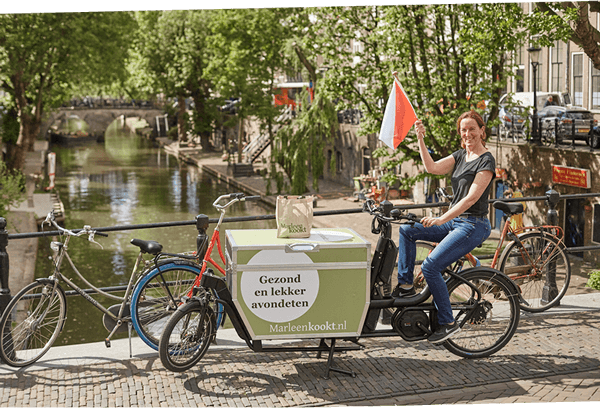
Cargo bike with a cooler
The operation started small, delivering around ten meals a day to friends and acquaintances whose children went to the same school. Delivery was done on the same bicycle that carried the kids to school, with service only in the Amsterdam area. To cook, they had the use of a cooking studio during daytime. After three months they were ready to invest in an electric cargo bike, repurposed and fit with a cooler to move meals instead of kids.
Nowadays, the team consists of twenty employees and MarleenKookt has its own transport network of 36 cargo bikes in three cities.
The growth was almost entirely organic. Jansen: “We started the company from scratch, with a lot of bumps along the way. Scaling up, we kept encountering things we simply hadn’t had to consider before. Take something like planning out your delivery routes. If you have ten meals you can do that on the back of a beer coaster. But when you have a hundred, all needing to be delivered within half hour windows ranging between 4 and 8PM, you’re going to need software and planners.”

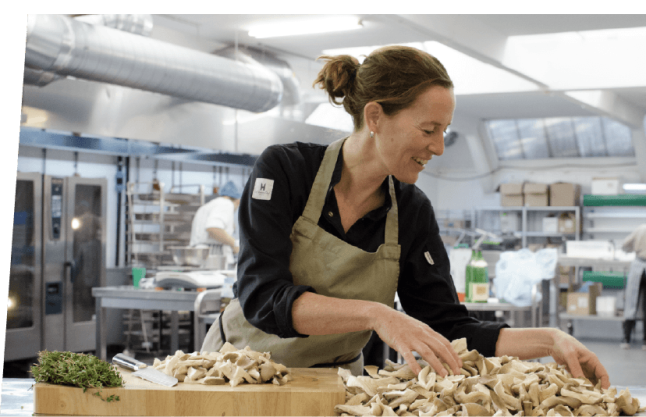
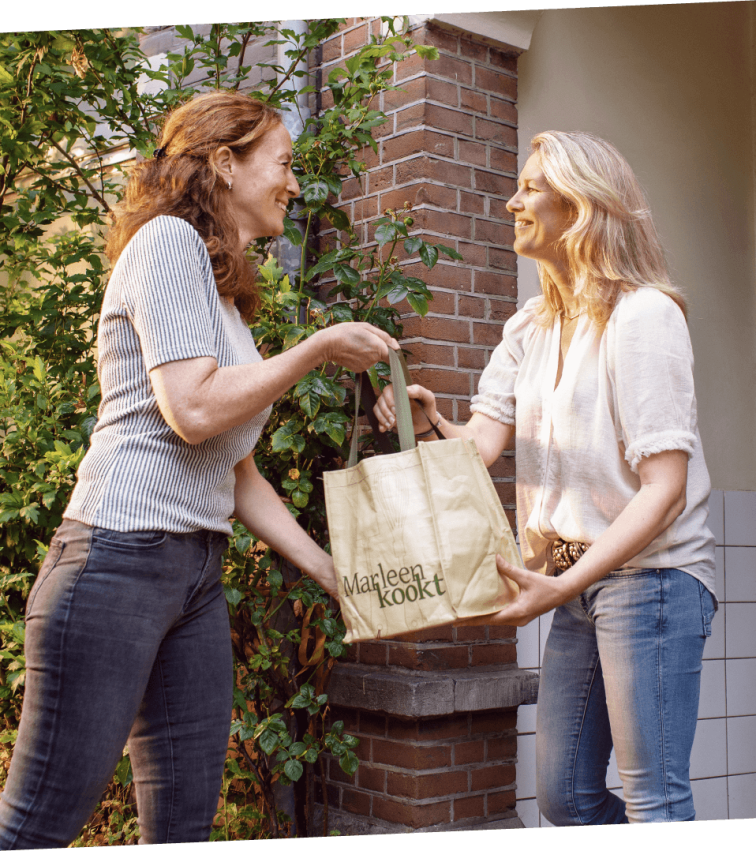
Pioneering to fill a personal need
MarleenKookt, which cooks and delivers freshly made meals, is one of the pioneers of this evolving trend in The Netherlands. Nine years ago, the founders quit their day jobs, and after a six month sabbatical they decided to start a meal delivery service. HelloFresh had yet to enter the Dutch market and the now familiar delivery platforms like Just Eat Takeaway, Deliveroo, or Uber Eats either didn’t exist or were only just beginning to catch on. Daily delivery of full meals at home was mostly limited to care facilities and senior centers. It was during this aforementioned sabbatical in Mallorca, where the family’s children aged five and seven were being homeschooled, that the contours of MarleenKookt began to become clear. Fresh, high quality meals aimed at young families that didn’t have the time or the inclination to spend hours on a meal every weekday. Jansen: “On Mallorca I began cooking every day again. It was something I always enjoyed but could never find the time for. Working with local ingredients every day. Coming up with new recipes. I loved it.” Her husband, who used to be part of the C-Suite at online photo service company Albelli and already had a wealth of experience in business development, took care of the business side of things from day one, managing the technology, delivery, and marketing. In late 2011, MarleenKookt was ready to get started.

Growing demand for meals at home
For many, it’s a real challenge to come up with and prepare a somewhat varied, healthy, and flavorful meal day in day out, seven days a week. Especially in a modern household of multiple people, where you have to account for the preferences and intolerances of each household member, including infamously picky eaters or demanding toddlers. Realising a home cooked meal requires a serious investment of time and effort. Most home chefs have an ironclad repertoire of maybe five reliable dishes total, and little inclination or energy to expand. This is a key driver behind the explosive growth of businesses offering meals at home that we’ve seen over the past few years, mostly aimed at customers looking for a bit of convenience. Just think about how much the ready made meal aisle at your local supermarket has expanded (sometimes to include online ordering and delivery), the ever increasing number of meal kit providers and the growing popularity of food delivery platforms.
This rapid growth isn’t showing any signs of stopping any time soon. Jansen: “The current generation of young families are still used to cooking at home somewhat regularly during the week. I think the generation of young parents after this one won’t be. It’s like when we used to make our own bread and butcher our own pigs. Nobody does that anymore either.” The weekends are for home cooking, extravagantly so if possible, Jansen expects. Weekday meals, however, will continue to evolve towards maximum convenience.
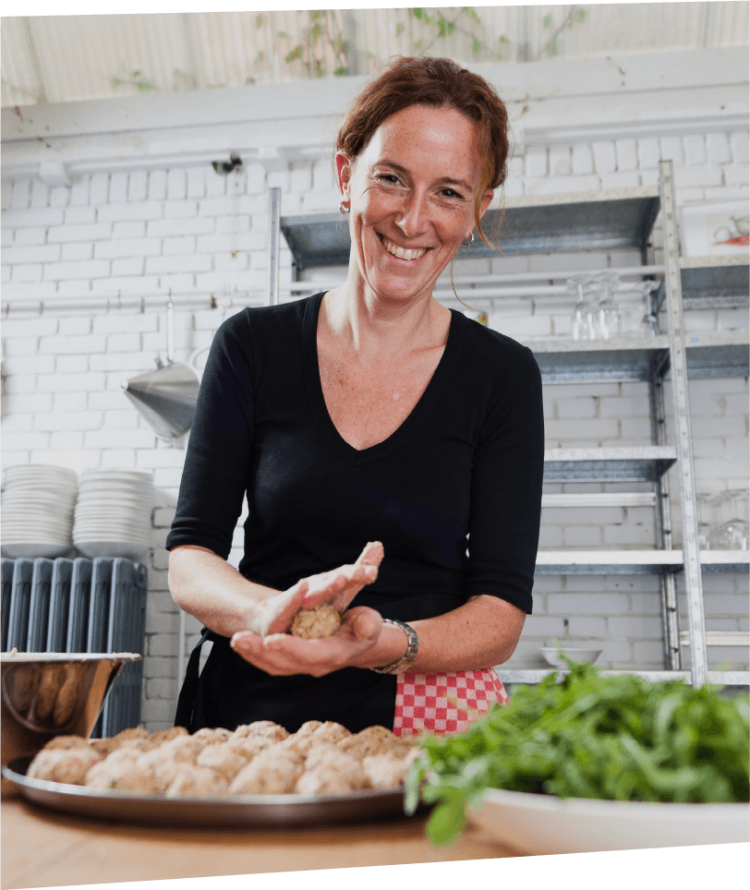
Marcus Polman Sander van der Meij
Ten years ago, the Dutch MarleenKookt, founded by Marleen Jansen, was one of the very first to begin delivering freshly made meals to people’s homes daily. It has since grown to employ five chefs and delivers a thousand meals a day on average. How did they realise this growth? And which factors have been critical for the success of this emerging meal delivery concept?

The growth strategy of emerging meal delivery company MarleenKookt

6 min
